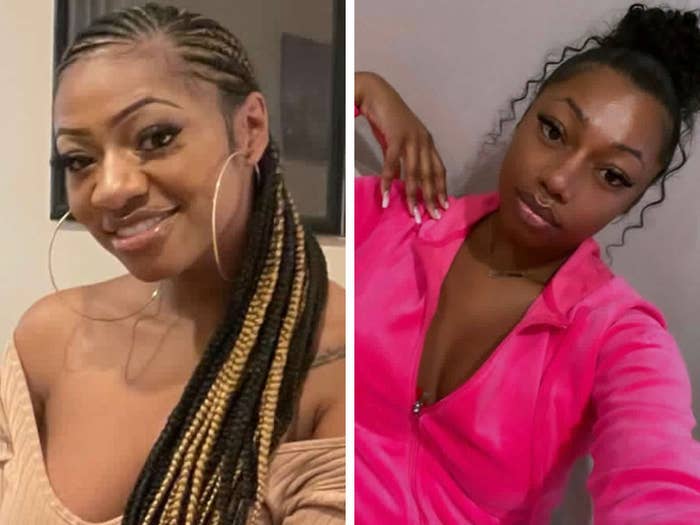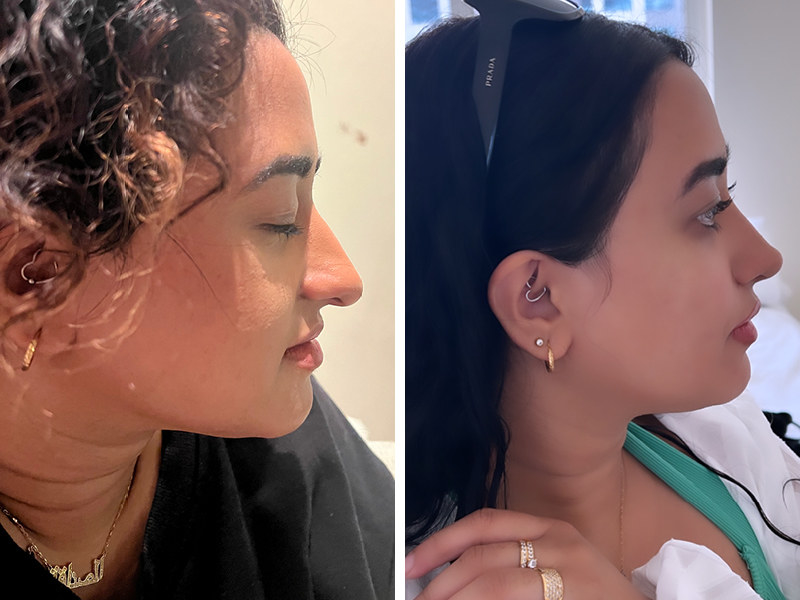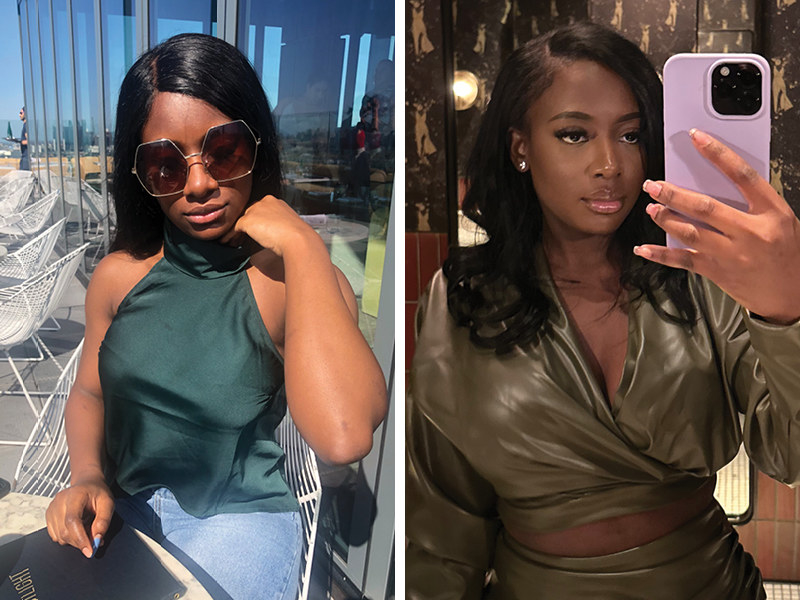
Dorissa White has known since she was 12 that she would get a nose job one day. In 2022, after years of being teased and bullied for her distinctive nose, a feature that she said “goes back many generations” in her family, the 30-year-old content creator sat in a plastic surgery clinic in Istanbul, ready to undergo an ethnic rhinoplasty.
Unlike the traditional nose job, an ethnic rhinoplasty, a term that has been used since 2003, is intended to change the appearance of the nose without diminishing its cultural and ethnic markers. The end result is usually more subtle than a typical nose job.
After two years of researching and WhatsApp consultations with representatives for prospective clinics abroad, White settled on Dr. Yusuf Orhan. She traveled from New York City to Turkey for her procedure and documented the process for her YouTube channel.
For $4,500, White was able to get the procedure and also a 10-day stay at a five-star hotel to recover.
White had compiled a mood board of dream noses that included images of various models and P-Valley actor Shannon Thornton, who herself has refuted claims that her nose is the work of a surgeon.
“I showed it to Dr. Orhan, and each one he said was unrealistic for my anatomy; at one point, he said, ‘I’m not even going to try that,’” White said. “I appreciated that because I knew that he was not going to give me this small pinched nose. Just because we think something looks good doesn’t mean that it will look good on us.”

In White’s case, to create more projection and reduce the size of her prominent nose, cartilage from her rib was removed to form a stiff graft that the skin would heal against. The need to harvest cartilage from elsewhere in her body is often a component of an ethnic rhinoplasty, which differs from a traditional rhinoplasty.
Three months after the operation, White has no regrets. “Many people tried to talk me out of it, and they told me that I needed to love myself,” she said. “But the thing is, you can love yourself until you’re blue in the face. But if you don’t like something, there’s nothing that is going to convince you otherwise.”
Today, TikTok is awash with examples of nose transformations, with around 4 billion views on videos with the #ethnicrhinoplasty hashtag. According to Google Trends, interest in the procedure has climbed over the past 12 months.
“I think ethnic rhinoplasty begins with the awareness that there are cultural variations and deviations in relationship to facial appearance,” Dr. Anthony Brissett, director of facial plastic surgery at Houston Methodist Hospital, told BuzzFeed News.
Deciding on the best course of action when doing an ethnic rhinoplasty is “an interesting conundrum,” Dr. Nima Shemirani, a plastic surgeon in Beverly Hills, told BuzzFeed News. “Can you respect someone’s ethnicity yet still make it look attractive and nice as if that person was born with it? I think that’s where the artistry comes in. We morph images to see what would fit on that person’s face.”
White desired a slimmer bridge, finished with a rounded tip, sometimes referred to as a button nose. While it’s still early in her recovery — it could take up to a year for her nose to fully heal — she is already satisfied with the work. “I feel like it is still fairly big, but it fits my face,” she said. “It’s much smaller than my original nose, but it’s not this super small nose that doesn’t look realistic on my face.”
Beyond its biological function, the nose is considered a defining feature in establishing facial harmony and symmetry. In addition, certain characteristics came to be associated with different groups of people and maligned thanks to harmful biases and designations.
In Sander L. Gilman’s 1999 book Making the Body Beautiful: A Cultural History of Aesthetic Surgery, the literary historian details how in the 18th and 19th centuries, the nose was a signifier of beauty and an indicator of moral standing and character. “The noses of the black and the Jew were signs of their ‘primitive’ nature,” he writes. “This was primarily because the too-flat nose came to be associated with the inherited syphilitic nose. In this view, flattened noses are nature’s moral comment on the hygiene of a ‘race’ in terms of both racial difference and dangerousness.”
Decades and several trend shifts later, the archetypal Black nose, with its wide bridge and flare nostrils, is still a source of shame for some Black people, who use methods like contouring, a makeup technique that uses shadow and product to create the illusion of a slimmer nose. But some critics have spoken out against such techniques. “Somewhere along the way, Black women have started to drink the proverbial ‘kool-aid,’” Briana McCarthy wrote for Essence magazine in 2020. “We’ve allowed a standard that doesn’t even consider us to seep into our beauty routines. We’ve begun to believe the lie that ‘our’ noses are bad and ‘theirs’ are better. Why else would we contour them?”
Similarly, in 2022, beauty entrepreneur Bobbi Brown, who is Jewish, pushed back against the contouring trend and shared how she turned down her mother’s offer to get a nose job as a young girl, once a popular trend for affluent Jewish teenagers.
Historically, Black celebrities who got plastic surgery opened themselves up to intense scrutiny and speculation about what procedures they may or may not have had while fighting accusations of self-loathing. Digital publication Atlanta Black Star didn’t hold back when it published a 2013 list of “10 Black Celebs Caught Expressing Self-Hate” and included the likes of Lil’ Kim, NeNe Leakes, and Tyra Banks as offenders for their decision to undergo plastic surgery. In 2020, talk show host Wendy Williams told her studio audience how she was “vilified, hung, suspended without pay” in the ’90s for her various surgical procedures, which she spoke openly about.
The Jackson family and their evolving faces have long been the subjects of speculation and tabloid ridicule. Janet, the youngest of the siblings, spoke candidly about undergoing a nose job at 16 years old. “Would I do it again? I don’t know. I’ve seen a lot of women that have been pulled and snatched, and it’s not too cute,” she told Extra in 2006.
For the past two decades, according to Houston Methodist Hospital’s Brissett, “the aesthetic norm was more strongly based on Western influence. And so, when a patient of ethnic descent, whether it be Black, Hispanic, Asian, or any of the above, went to see a plastic surgeon, and it was for a rhinoplasty, oftentimes what they were getting was a change in nasal appearance based on Western norms and standards.”
Brissett said he often saw clients who weren’t happy with the results. “I was then forced to do a racial or cultural restoration, trying to bring patients back more towards what their noses could or should look like in relationship to their racial features,” he said.
Research from the American Society of Plastic Surgeons confirms that the pandemic has had a general influence on the rising number of people getting plastic surgery for various reasons, including the so-called Zoom boom, or the phenomenon of people becoming hyperfixated on their on-camera appearance because of remote working.
People of color have been among the most rapidly growing category of patients. According to the American Society of Plastic Surgeons, from 2000 to 2013, the number of procedures performed on ethnic patients increased by 243%.
This is likely due to several factors. Among them is the fact that plastic surgery is less taboo than ever, especially in racial and ethnic minority communities.
The boom of reality TV makeover shows in the 2000s demystified the process, showing viewers what was possible. And more celebrities have spoken candidly about their procedures. In 2011, Kelly Rowland made it clear that she had no regrets after undergoing breast augmentation back in 2007. And after years of gossip, rapper Cardi B confirmed during an Instagram Live that she had had a rhinoplasty back in 2020, telling fans, “I had my daddy’s nose. That had to go.”
When celebrities aren’t ready to speak up, the litany of social media posts dedicated to determining what work they may or may not have gotten has threatened the veil of secrecy. YouTubers like Lorry Hill have built entire brands by offering their assessment of how famous faces and bodies are being augmented.
There’s also the fact that cosmetic procedures are increasingly affordable. A rhinoplasty, which can cost north of $15,000 in Beverly Hills, can now be bought for a third of that price in Turkey, with an all-inclusive vacation to go with it. This accessibility has been a major driving force in determining who has the means to make their aesthetic revisions a reality.
Most importantly, perhaps, new developments in the procedure itself have meant patients can be optimistic about obtaining better results than in the past. “We’re still learning new things about the nasal anatomy to this day that we didn’t know 20 years ago,” Shemirani said. “The evolution has changed from removing too much cartilage to adding cartilage grafts, and now to respecting the anatomy and reshaping and restructuring.”
Shemirani, who has nearly two decades of experience as a surgeon, performed around 200 rhinoplasties last year, around half of which he says were for nonwhite patients.
“I’ve had Middle Eastern patients who have a big hump [on their nose], but they want to leave a little bump to maintain their ethnicity. That’s a common request,” Shemirani said.
Performing a rhinoplasty on people of color is a process that comes with certain considerations for anatomy, which Shemirani says surgeons plan and prepare for. “Black noses are very similar to Asian noses, the skin’s a little bit thicker, so if someone wants a little bit more definition, you have to address the skin. [Also] the cartilage, which is underneath, is the framework that the skin rests on [and] is a little bit weaker, so you really have to reinforce the nose,” he explained. “We take cartilage grafts from inside the nose. In some cases, especially with Asian and Black noses, there isn’t enough cartilage inside the nose, so sometimes we take rib cartilage because you want a strong post so that when the skin heals against it, it’ll shrink-wrap nicely and it won’t just crumple under the pressure of healing.”

Saima Kay’s decision to undergo a rhinoplasty was primarily medical but also an opportunity to address the simple truth that she was not the biggest fan of her nose.
“I've always disliked my nose, but it was never something that I was insecure about,” said the 29-year-old, who is Pakistani and based in Dubai. “My logic when thinking about something is that if you can change it, then do it. Life's too short to not go ahead.”
Kay’s original nose had a drooping tip, which can make the nose appear longer.
“Being South Asian, you have your features, right? I didn’t want to lose that completely,” Kay said. “Don't get me wrong; my nose is very different from what it was. But I felt like if it had gotten any smaller or changed anymore, then that would take away the ethnic element.”
After months of experiencing difficulties breathing and repeat sinus infections, Kay got an X-ray last January that confirmed she had a deviated septum.
“From that point, I was like, OK, cool, this is my confirmation to get a nose job. So initially, I looked at septoplasty,” she said, referring to the procedure that corrects a deviated septum.
After researching septoplasty, Kay decided that the most cost-effective option for addressing her medical and aesthetic concerns would be to get a combined rhinoplasty and a septoplasty, known as a septorhinoplasty. The procedure would reposition her nasal septum to the middle of her nose and also address its shape and size.
Within weeks, the content creator had done thorough research, compiled spreadsheets of her options, and consulted with doctors in the UK, the United Arab Emirates, and Turkey before settling on a surgeon in Istanbul for a fee of just over $3,000.
“I read everything that I possibly could to see which doctor was the best because I’ve seen bad nose jobs, and I didn’t want to go through a procedure where I end up hating it even more at the end and was incurring double the cost,” Kay said.
Nine months after the operation, while Kay can acknowledge that she is “a lot more confident,” she hasn’t ruled out any further procedures.
“I spoke to my doctor about that, and if I’m still not happy with it once it completely heals, he said that we’ll do a slight procedure to just shave a bit of it away,” she said.
Her decision to alter her appearance generated mixed responses when she shared it with her followers online; people were particularly vocal on TikTok, where she has just under 5,000 followers.
“I had a lot of people saying, ‘Oh my god, you’re getting rid of your ethnic features; your Pakistani nose was nice.’” she said. “And I made a [response] video where I was like, ‘why are you holding just my nose to my ethnicity? I’m not praised for holding on to my curly hair, so why is it this one thing that I am doing, my personal preference, being attacked?” Presently, Kay’s nose is three months shy of the projected healing time, and its subtle changes have been noticed by some friends, while others say “they can’t tell the difference.”
But Kay said she can now sleep through the night. And she feels positive about her profile when she tilts her head to the left, which she considers her “good side.”

It’s been two years since Ayeshah Atsegbua had her procedure done. Like White and Kay, she traveled to Turkey for the rhinoplasty, which cost around $5,000.
“When I got to the point where my nose was fully healed, my confidence level was just on another level, and I’m so happy that I got it done,” she said.
The 26-year-old nurse, who is from New York, spent some of her formative years at a high school in Nigeria, where her nose didn’t necessarily deviate from the standard but still wasn’t entirely to her satisfaction. “When you’re around African people in Nigeria, you don’t think about your features, because everyone there has a big nose, big lips, you know what I mean? So it wasn’t really a thing. I did always know that I didn’t really like it that much, but it wasn’t like, oh my god, I’m gonna go fix this one day,” Atsegbua said.
After relocating to the UK, the registered nurse began considering the available options for revising her nose. “I literally saw one girl from the UK post a YouTube video,” she said. “I loved how her nose looked, and she showed the doctor. She did a vlog of the whole situation. So I’m like, OK, this is perfect. I hit him up on his Instagram.”
Atsegbua was clear in her request, telling her doctor that she wanted a slimmer nose, and a higher tip, but most importantly, she didn’t want the result to be “super small, where it looks like a white person’s nose.”
Concerned that her immediate family would disapprove or try to dissuade her from getting the surgery, Atsegbua did not disclose her plans to them.
“My mom lives in the UK, and I live in New York with my aunt, so I was hiding from her for like a month. When she finally saw me, she’s like, ‘Hmm, you look different,’” Atsegbua said.
She told her aunt that she had undergone a rhinoplasty and eventually explained her decision to her mother. “My mom called me and gave me the whole speech — Oh my god, why would you get it done? — but when she finally saw me in person, she actually said she loved my nose job.”
Fear over how people would react also meant that Atsegbua did not initially share her transformation with her online followers and friends.
“I guess I was still afraid some people might judge,” she said. “You didn’t hear about Black people getting their noses done often. You hear about it now, but when I got it done, I didn’t really know any person that had ever done it.”
In a world where the aesthetic decisions of Black women, especially, are frequently scrutinized and politicized, neither White nor Atsegbua are interested in defending their decision to get plastic surgery or debating critics who make assumptions about how they feel about their Blackness.
“I don’t think it takes away from my being African or hides my features. I’m always like, if you don’t like something, change it,” Atsegbua said.
White echoed that sentiment. “I think it’s possible to embrace yourself, but I look at a nose job like I look at braces. People will try to convince you not to get a nose job. But they won’t convince you not to get braces. Why don’t you love your teeth the way they are?” White said. “I don’t think that we can say, ‘Love yourself more.’ It’s deeper than that.” ●

